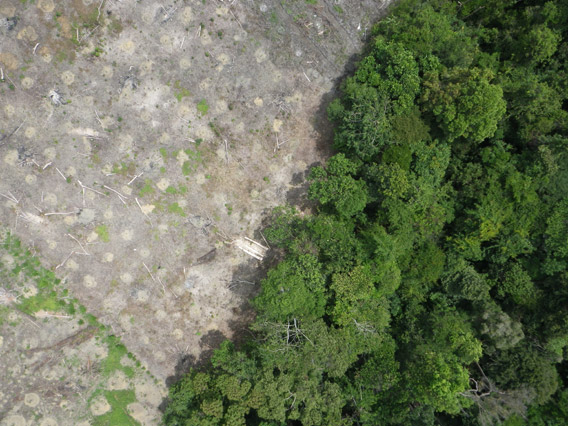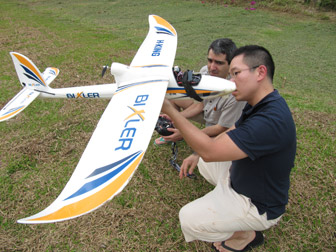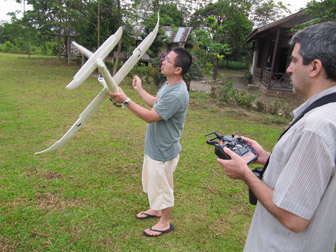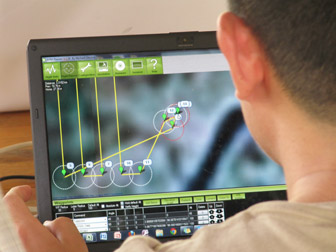http://news.sciencemag.org/sciencenow/2012/02/bacteria-killing-viruses-wield-a.html?ref=hp
Forget needles in haystacks. Try finding the tip of a needle in a virus. Scientists have long known that a group of viruses called bacteriophages have a knack for infiltrating bacteria and that some begin their attack with a protein spike. But the tip of this spike is so small that no one knew what it was made of or exactly how it worked. Now a team of researchers has found a single iron atom at the head of the spike, a discovery that suggests phages enter bacteria in a different way than surmised.
Wherever there are bacteria you will find bacteriophages; digestive tracts, contaminated water, and feces are usually a good start. These viruses begin their dirty work by drilling into the outer membrane of bacteria. Once completely through all of a bug's defenses, the phages inject their DNA, which essentially turns the bacterium into phage-producing factories. Eventually, the microbes become filled with so many viruses that they burst, releasing a new horde of phages into the environment.
Although much is known about phage reproduction, little is understood about how the virus initially gains entry into the bacterium. "We knew ... there must be a special protein that makes the very first opening in the outer cell membrane of the bacterial envelope," says Petr Leiman, a biophysicist at the École Polytechnique Fédérale de Lausanne in Switzerland. "But we didn't know what the very end of the structure, the business end, the tip that attacks the membrane, looks like."
So Leiman and colleagues decided to partially reverse engineer the viral tips. Their new study concerns two bacteriophages known as P2 and Φ92, viruses that target bacteria such as Salmonella and Escherichia coli. The researchers already knew which gene contained instructions for how to make P2's protein spike. And after a bit of scouring, they discovered an analogous gene in Φ92. The scientists then produced the proteins those genes encode and turned them into crystals. This allowed them to use a technique called x-ray crystallography, in which they bombard the crystals with x-rays, to get a sense of the proteins' structure.
In theory this should have been enough to give the researchers a glimpse of the elusive tip of the spike. But when they tried to model the spike using the data from the x-ray crystallography work, the tip remained invisible. To get around this problem, the researchers modified the phage's spike genes so that they only produced the portion of the protein tip that was resistant to being viewed. When they crystallized this smaller protein fragment, the x-rays were finally able to resolve its structure, and from this the team had the very first picture of the tip of the spike: a single iron atom held in place by six amino acids, forming a sharp needlelike tip—perfectly suited for piercing the outer membranes of bacteria. The team reports its findings this month in Structure.
Scientists had always assumed that when phages drill their way through the outer membrane, they first have to soften it up a bit in some way, says Mark van Raaij, a biologist and virus expert at the Instituto de Biologia Molecular de Barcelona in Spain, who was not involved in the work. But the discovery of the sharp iron needle, he says, suggests that P2 and Φ92 don't need any help. "It's like driving a nail or stake through the membrane of the bacteria."
Leiman notes that findings like these could lead to new ways to combat bacteria that make people sick. As scientists reverse engineer phages, he suggests, they can isolate those parts that are most effective at killing bacteria and perhaps produce a new class of antibacterial agents.
Forget needles in haystacks. Try finding the tip of a needle in a virus. Scientists have long known that a group of viruses called bacteriophages have a knack for infiltrating bacteria and that some begin their attack with a protein spike. But the tip of this spike is so small that no one knew what it was made of or exactly how it worked. Now a team of researchers has found a single iron atom at the head of the spike, a discovery that suggests phages enter bacteria in a different way than surmised.
Wherever there are bacteria you will find bacteriophages; digestive tracts, contaminated water, and feces are usually a good start. These viruses begin their dirty work by drilling into the outer membrane of bacteria. Once completely through all of a bug's defenses, the phages inject their DNA, which essentially turns the bacterium into phage-producing factories. Eventually, the microbes become filled with so many viruses that they burst, releasing a new horde of phages into the environment.
Although much is known about phage reproduction, little is understood about how the virus initially gains entry into the bacterium. "We knew ... there must be a special protein that makes the very first opening in the outer cell membrane of the bacterial envelope," says Petr Leiman, a biophysicist at the École Polytechnique Fédérale de Lausanne in Switzerland. "But we didn't know what the very end of the structure, the business end, the tip that attacks the membrane, looks like."
So Leiman and colleagues decided to partially reverse engineer the viral tips. Their new study concerns two bacteriophages known as P2 and Φ92, viruses that target bacteria such as Salmonella and Escherichia coli. The researchers already knew which gene contained instructions for how to make P2's protein spike. And after a bit of scouring, they discovered an analogous gene in Φ92. The scientists then produced the proteins those genes encode and turned them into crystals. This allowed them to use a technique called x-ray crystallography, in which they bombard the crystals with x-rays, to get a sense of the proteins' structure.
In theory this should have been enough to give the researchers a glimpse of the elusive tip of the spike. But when they tried to model the spike using the data from the x-ray crystallography work, the tip remained invisible. To get around this problem, the researchers modified the phage's spike genes so that they only produced the portion of the protein tip that was resistant to being viewed. When they crystallized this smaller protein fragment, the x-rays were finally able to resolve its structure, and from this the team had the very first picture of the tip of the spike: a single iron atom held in place by six amino acids, forming a sharp needlelike tip—perfectly suited for piercing the outer membranes of bacteria. The team reports its findings this month in Structure.
Scientists had always assumed that when phages drill their way through the outer membrane, they first have to soften it up a bit in some way, says Mark van Raaij, a biologist and virus expert at the Instituto de Biologia Molecular de Barcelona in Spain, who was not involved in the work. But the discovery of the sharp iron needle, he says, suggests that P2 and Φ92 don't need any help. "It's like driving a nail or stake through the membrane of the bacteria."
Leiman notes that findings like these could lead to new ways to combat bacteria that make people sick. As scientists reverse engineer phages, he suggests, they can isolate those parts that are most effective at killing bacteria and perhaps produce a new class of antibacterial agents.













